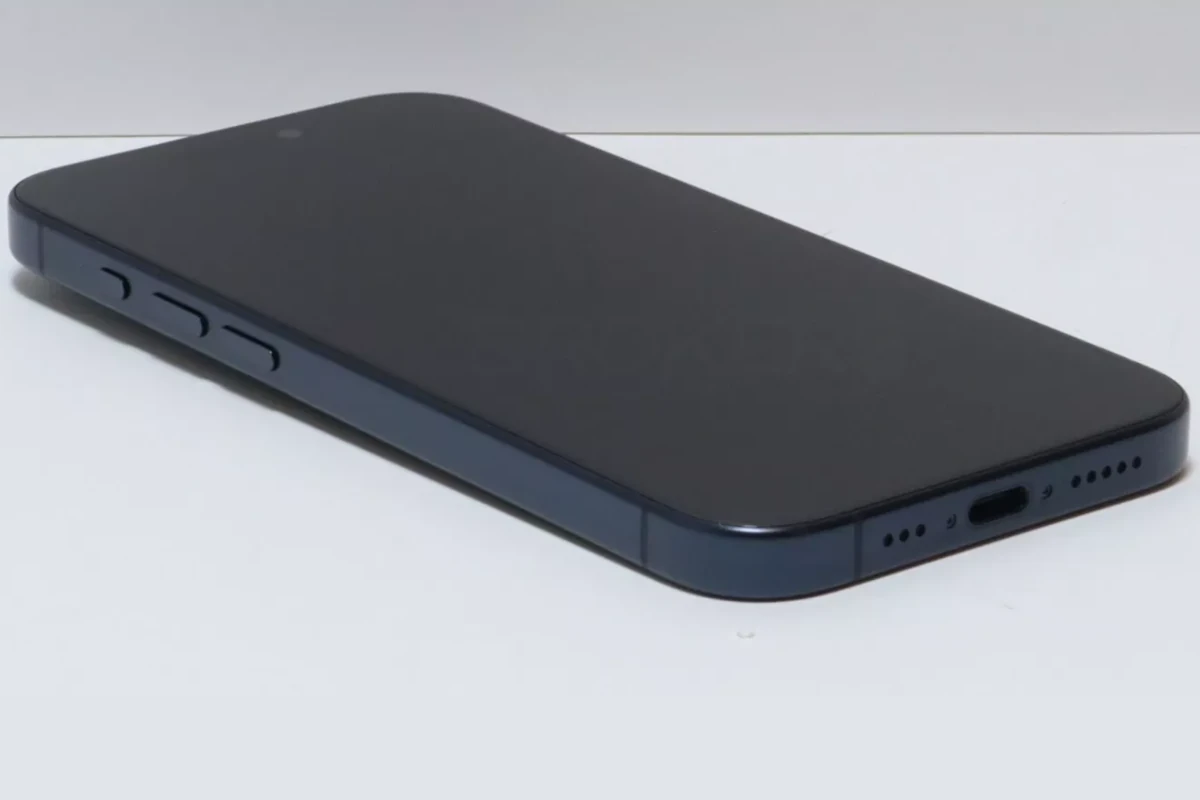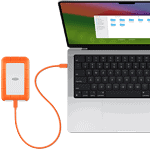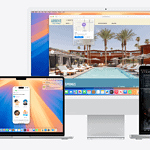iPhone brightness issues can be frustrating. Users often struggle when their screen stays dim or won’t adjust. The most common causes are software glitches, auto-brightness settings, or hardware problems.
Quick fixes include turning off auto-brightness, adjusting display settings, and restarting the device. These steps often solve the problem. If they don’t work, a software update or reset might be needed.
Sometimes the issue stems from physical damage or a faulty screen. In these cases, professional repair may be necessary. It’s important to rule out simple fixes before seeking expert help.
If your iPhone screen looks too dim, too bright, or fails to adjust automatically, it’s likely a brightness or True Tone issue. This can happen after a software update (like iOS 18 or 19), due to auto-brightness settings, or even hardware faults such as a failing ambient light sensor.
This guide will help you quickly diagnose and fix brightness problems on any iPhone model — including iPhone 12 through iPhone 15 Pro and newer.
⚙️ Step 1: Check Your Brightness Settings
- Open Settings → Display & Brightness.
- Drag the Brightness slider manually to increase the level.
- If the screen brightens, your display is fine — but Auto-Brightness may be misconfigured (see next step).
Shortcut: Swipe down from the top-right corner → adjust brightness in Control Center.
🌤️ Step 2: Turn Off (or On) Auto-Brightness
Auto-Brightness uses your iPhone’s ambient light sensor to adjust brightness automatically. If it’s malfunctioning, your screen may stay dim.
- Go to Settings → Accessibility → Display & Text Size.
- Scroll down and toggle Auto-Brightness off.
- Adjust brightness manually to see if it improves.
If your brightness now behaves normally, the light sensor may need recalibration (see Step 7).
(Source: Apple Support)
🔅 Step 3: Disable True Tone and Night Shift
Features like True Tone and Night Shift can make your screen appear dimmer or warmer than usual.
- True Tone: Go to Settings → Display & Brightness → True Tone → toggle it off.
- Night Shift: Go to Settings → Display & Brightness → Night Shift → turn off Scheduled and Manual settings.
Check if your display returns to normal brightness.
🔋 Step 4: Turn Off Low Power Mode
Low Power Mode can limit background activity and reduce display brightness to conserve battery.
- Go to Settings → Battery.
- Toggle Low Power Mode off.
You can also turn it off quickly from Control Center (battery icon).
🌞 Step 5: Check Auto-Lock and Attention Settings
If your screen dims randomly during use:
- Go to Settings → Display & Brightness → Auto-Lock, and set it to 2 minutes or longer.
- Then go to Settings → Face ID & Attention → turn off Attention-Aware Features.
This stops your iPhone from dimming when you’re not looking directly at it.
🧩 Step 6: Restart or Force Restart Your iPhone
Sometimes, display bugs or background processes cause temporary brightness issues.
- Restart: Press and hold the Side button + Volume Up/Down, then slide to power off.
- Force restart:
- Quickly press Volume Up, then Volume Down, then hold the Side button until the Apple logo appears.
After rebooting, check if brightness works normally.
🔧 Step 7: Reset All Settings
If the issue persists, reset your iPhone’s settings (this won’t delete your data).
- Go to Settings → General → Transfer or Reset iPhone → Reset → Reset All Settings.
- Enter your passcode and confirm.
This resets display, network, and accessibility settings — often fixing hidden configuration errors.
🧠 Step 8: Check for iOS Updates
Apple frequently patches display and brightness bugs in new updates.
- Go to Settings → General → Software Update.
- Install any available update.
If you’re already on the latest version, you can also reinstall iOS using Finder (Mac) or iTunes (Windows) for a clean software refresh.
(Source: iTechHacks – iOS 26 Brightness Issue Fixes)
🧹 Step 9: Clean the Ambient Light Sensor
If Auto-Brightness still doesn’t respond:
- Gently clean the front-facing sensor area (top of the screen near the earpiece).
- Remove any screen protector or case that might block the sensor.
A dirty or obstructed sensor can prevent proper brightness adjustment.
🧪 Step 10: Test in Safe Mode (for Jailbroken Devices Only)
If you’ve jailbroken your iPhone, tweaks can interfere with brightness controls. Boot into Safe Mode to check if the issue disappears. If it does, uninstall recently added tweaks.
🧰 Step 11: Hardware Diagnostics
If none of the above steps work, your ambient light sensor or display backlight may be faulty.
You can test this via:
- Apple Diagnostics: Turn off your iPhone → hold Power + Volume Up until you see the diagnostics screen.
- Or visit an Apple Store or authorized repair center for a full hardware inspection.
(Source: Tenorshare – iOS 26 Screen Brightness Bug Fixes)
⚡ Bonus Tip: Adaptive Brightness Calibration
If Auto-Brightness seems inconsistent:
- Go to a bright environment, turn Auto-Brightness on, and set brightness high.
- Move to a dark room, and set brightness low.
- Lock the phone for a few minutes to let iOS recalibrate.
🧾 Summary
| Problem | Likely Cause | Fix |
|---|---|---|
| Screen too dim | Auto-Brightness or Low Power Mode | Turn them off |
| Brightness slider not working | Software glitch | Restart or reset settings |
| Auto-Brightness inconsistent | Dirty sensor or calibration issue | Clean sensor, recalibrate |
| Screen flickering | iOS bug or hardware issue | Update or contact Apple |
| True Tone/Night Shift too warm | Display settings | Turn off both features |
📚 References
- Apple Support – Adjust the brightness on your iPhone
- iTechHacks – iOS 26 Brightness Issue on iPhone (2025 Fixes)
- Tenorshare – iOS 26 Screen Brightness Bug Fixes
- iMobie – iPhone Brightness Not Working Fixes
Key Takeaways
- Check auto-brightness settings and restart your iPhone
- Update iOS software to fix potential brightness bugs
- Seek professional help if simple fixes don’t work
Troubleshooting iPhone Brightness Issues
iPhone brightness problems can be frustrating but often have simple fixes. Users may face issues with screen dimness, unresponsive controls, or inconsistent brightness levels.
Understanding Brightness Controls
iPhones have multiple ways to adjust screen brightness. The main control is in Settings under Display & Brightness. Users can also access a quick slider in Control Center by swiping down from the top-right corner of the screen.
Auto-Brightness adjusts screen light based on surroundings. This feature is found in Settings > Accessibility > Display & Text Size. Some users prefer to turn it off for manual control.
True Tone changes color temperature to match ambient light. It’s in the same menu as Auto-Brightness. While helpful it can affect perceived brightness.
Common Brightness Problems and Solutions
Unresponsive brightness controls often stem from software glitches. A quick fix is to restart the iPhone. Press and hold the side button and either volume button then slide to power off.
If brightness seems stuck low check for Low Power Mode. This setting dims the screen to save battery. Turn it off in Settings > Battery.
Night Shift can make the screen look dim by reducing blue light. Adjust or disable it in Settings > Display & Brightness.
For persistent issues try resetting all settings. Go to Settings > General > Transfer or Reset iPhone > Reset > Reset All Settings. This won’t delete data but will restore default settings.
Advanced Settings and Adjustments
Accessibility features can impact brightness. Check Reduce White Point in Settings > Accessibility > Display & Text Size. If on it lowers screen intensity.
Dark Mode can make the screen seem dimmer. Toggle it in Settings > Display & Brightness or Control Center.
Some third-party apps offer screen dimming. These can interfere with system brightness. Check installed apps and remove any screen dimmers if needed.
Software updates often fix brightness bugs. Keep iOS up to date through Settings > General > Software Update.
Hardware Considerations and External Factors
Physical damage can affect screen brightness. Look for cracks or water damage. If present professional repair may be needed.
Ambient light sensors near the front camera can malfunction. This causes Auto-Brightness issues. Clean this area gently with a soft cloth.
Screen protectors or cases can block the light sensor. Remove these to test if they’re causing problems.
Extreme temperatures can dim iPhone screens to protect hardware. Let the device cool down or warm up before use.
Frequently Asked Questions
iPhone brightness issues can be frustrating. These common questions address various scenarios users may encounter with their device’s screen brightness.
Why does my iPhone screen remain dark despite being set to full brightness?
A dark screen at full brightness may indicate a hardware problem. Check for physical damage. If none is visible, restart your iPhone. This often fixes minor glitches. If the issue persists, contact Apple Support for further assistance.
How can I troubleshoot an iPhone that has brightness issues following an iOS update?
After an iOS update, reset all settings. Go to Settings > General > Transfer or Reset iPhone > Reset > Reset All Settings. This fixes many software-related brightness problems. If issues continue, try a factory reset or contact Apple Support.
What steps should be taken when an iPhone 11 exhibits brightness control problems?
First, turn off auto-brightness. Go to Settings > Accessibility > Display & Text Size and toggle off Auto-Brightness. If this doesn’t work, check for iOS updates. Install any available updates as they often contain fixes for known issues.
How do I resolve brightness issues on my iPhone 12?
Check if True Tone is on. This feature can affect perceived brightness. To turn it off, go to Settings > Display & Brightness and toggle off True Tone. Also, ensure Night Shift isn’t active as it can make the screen appear dimmer.
What could be the reason for an iPhone’s brightness settings to stop working after exposure to water?
Water damage can affect screen functionality. If your iPhone was exposed to water, power it off immediately. Don’t charge it. Instead, let it dry completely for at least 48 hours. If problems persist, seek professional repair services.
How can I fix an iPhone screen that stays dim even when auto-brightness is turned off?
Check for low power mode. This mode can limit screen brightness. Go to Settings > Battery and turn off Low Power Mode. If the screen is still dim, reset all settings as mentioned earlier. This often resolves persistent brightness issues.







